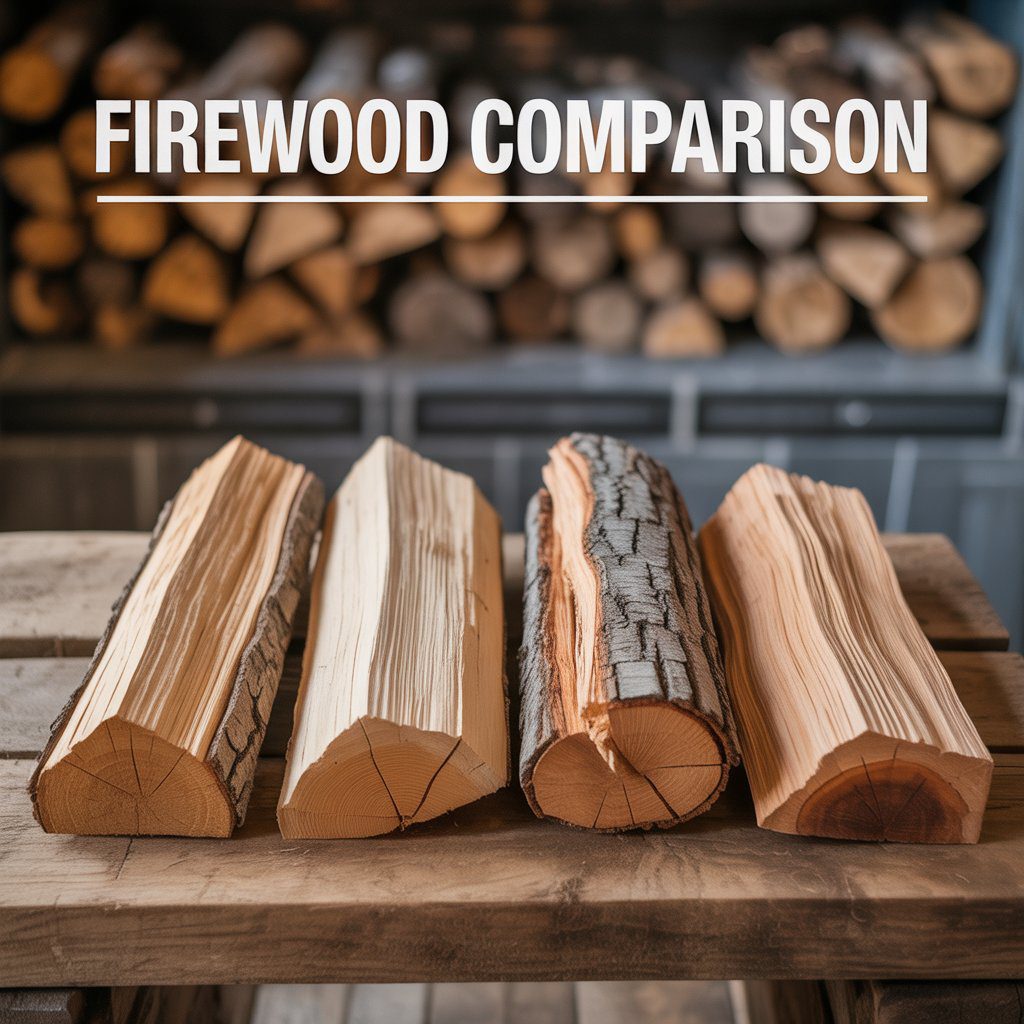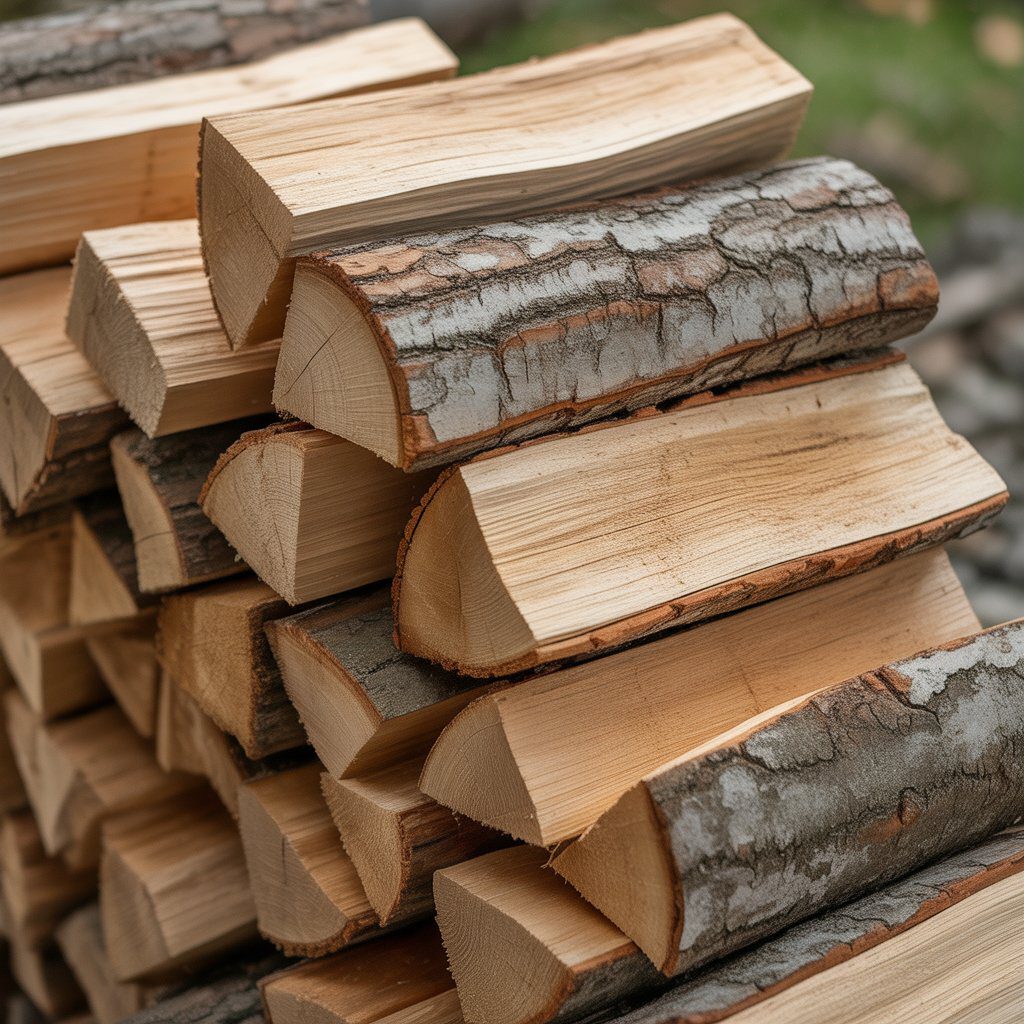Introduction
There’s nothing quite like the warm crackle of a fire on a cold winter evening. After two decades of tending to my own wood-burning fireplace, I can tell you: not all firewood is created equal. On many a frosty night, I’ve learned the difference between a roaring fire that heats the home beautifully and a smoky mess that leaves you frustrated and chilly.
Choosing the best wood for fireplace use isn’t just about convenience; it’s about efficiency, safety, and overall enjoyment. Over the years, I’ve tried everything from green softwood to premium seasoned hardwoods, and I’ve gathered insights that will help you get the most from every cord of wood you burn.
In this comprehensive guide, I’ll walk you through the key fireplace wood types, explain what makes seasoned firewood so important, and break down the best hardwood for fireplace heating. Whether you’re a new wood-burner or a seasoned pro yourself, you’ll come away with a deeper understanding of what truly is the best wood for fireplace use.
Understanding Wood Types for Fireplaces

Hardwood vs Softwood
The first thing to understand about fireplace wood types is the difference between hardwood and softwood. Hardwood fireplace options come from deciduous trees like oak, maple, and hickory, and they burn hotter and longer than their softwood counterparts. Softwoods like pine and fir are derived from conifers and burn faster with more crackle, making them ideal for kindling but not long-lasting heat.
Seasoning and Moisture Content
Regardless of type, seasoned firewood is a must. Firewood needs to have a moisture content below 20% to burn efficiently. Green wood (freshly cut) is full of sap and water, which leads to excessive smoke, poor heat output, and creosote buildup in your chimney. I use a moisture meter to check my wood before burning—an inexpensive tool that can save you a lot of hassle.
BTU Output and Burn Efficiency
Wood is rated by firewood BTU (British Thermal Units). The higher the BTU, the more heat you get. Hardwood generally provides higher BTUs. For example, hickory delivers around 28 million BTUs per cord, whereas pine offers just 15-17 million. If you’re heating your home, you want the longest-lasting, clean burning wood possible. The best wood for fireplace heating always delivers high BTUs with minimal smoke.
Burn Time and Heat Retention
Hardwood vs softwood fireplace comparisons always come down to burn time. Hardwoods burn longer and steadier, making them perfect for overnight fires or sustained heat. Softwoods catch quickly but burn out fast—perfect for starting your fire or adding ambiance on a cool fall evening. The best wood for fireplace setups will often use both types strategically.
Top Hardwoods – The Best Wood for Fireplace Heating

Over the years, I’ve tried almost every hardwood available in my region. Here are the top choices that consistently rank as the best wood for fireplace heating:
| Wood Type | BTU per Cord (in Millions) | Burn Time | Aroma | Splitting Difficulty | Notes |
|---|---|---|---|---|---|
| Oak (Red/White) | 24–26 | Long | Mild | Medium | Gold standard, excellent for sustained heat |
| Maple | 22–24 | Moderate–Long | Sweet | Moderate | Burns clean, great for families |
| Hickory | 27–28 | Very Long | Strong | Difficult | Highest BTU, ideal for overnight |
| Ash | 20–23 | Moderate | Neutral | Easy | Burns even when not fully seasoned |
| Birch | 20–21 | Short–Moderate | Sweet | Easy–Moderate | Visually beautiful, quick to light |
| Cherry | 19–21 | Moderate | Fruity | Moderate | Great aroma, great for ambiance |
Each of these qualifies as premium firewood and fits the criteria for best hardwood for fireplace heating. I’ve always kept a mix on hand depending on whether I want heat longevity or a quick warm-up. The best wood for fireplace isn’t just one type—it’s knowing how and when to use the right wood for the moment.
Softwoods for Kindling and Quick Fires
Softwoods aren’t ideal for all-night fires, but they’re invaluable for starting one. In my experience, nothing beats a few pieces of pine firewood or cedar kindling to get things going. These are great when you’re looking for the best wood for clean burning fireplace kindling.
| Softwood | Burn Speed | Best Use | Aroma | Notes |
| Pine | Fast | Kindling | Strong | Season well to reduce creosote |
| Fir | Fast | Short fires | Light | Douglas Fir burns fairly clean |
| Cedar | Very Fast | Kindling | Pleasant | Excellent smell, quick igniter |
Woods to Avoid in Your Fireplace
Not all wood is safe. Avoid these options for the health of your fireplace and your home:
- Treated Lumber: Contains harmful chemicals.
- Green Wood: Too moist, leads to creosote.
- Resinous Woods: High sap content creates excess smoke.
Buying and Storing Fireplace Wood
Buying Firewood

Look for suppliers offering well-seasoned, split firewood. Ask how long it’s been drying. Wood should have gray ends and feel light for its size.
- Best time to buy firewood: Late spring or early summer
Storing Fireplace Wood

- Store wood in a covered, raised rack
- Keep it off the ground to avoid rot
- Ensure airflow to maintain low moisture
Regional Considerations and Availability
Depending on where you live, your options will vary. For instance:
| Region | Best Wood Types | Availability | Notes |
| Northeast | Maple, Birch, Oak | High | Cold climate benefits from high BTU wood |
| Midwest | Hickory, Ash, Cherry | Moderate | Great for long winters |
| South | Oak, Pecan, Pine | High | Softwoods abundant, hard to find seasoned |
| West Coast | Fir, Cedar, Madrone | Moderate | Softwoods common, great for quick fires |
Conclusion
Choosing the best wood for fireplace use boils down to experience, availability, and knowing what works best in your climate and setup. After 20+ years, I keep a mix: hardwoods like oak or hickory for long-lasting heat, and softwoods like cedar or pine for kindling.
Remember to always use seasoned firewood, store it properly, and avoid unsafe options. Whether you’re looking for the best wood for small fireplaces or planning long winter nights by the fire, your wood choice makes all the difference. The key to clean, efficient, and safe heating lies in selecting the best wood for fireplace conditions that match your needs.
Stay warm and safe—and may your fires always burn bright.
Bonus: Tips for Eco-Friendly and Efficient Wood Burning
If you’re serious about maximizing the performance of your fireplace wood burning setup while staying eco-conscious, here are a few pro tips from years of experience:
1. Burn Hot and Fast Occasionally
This helps reduce creosote buildup. A few minutes of a high-temperature fire can clean your flue naturally between chimney sweeps.
2. Use a Fireplace Insert
Upgrading to a modern insert can boost efficiency by up to 70%, making your best wood for fireplace choices go further with less smoke.
3. Rotate and Age Your Stock
Use the “first in, first out” method when storing. Always rotate older wood forward to ensure you’re using the most seasoned logs first.
4. Recycle Ash
Wood ash can be great for gardens. I often use mine to raise the pH of acidic soil—just make sure it’s from clean burning wood only.
5. Support Local, Sustainable Suppliers
Buying local firewood supports the economy and reduces the carbon footprint of long-haul transport. Look for FSC-certified suppliers when possible.
FAQs about Best Wood for Fireplace

What is the best wood for fireplace use?
The best wood for fireplace use is seasoned hardwood like oak, hickory, or maple. These woods provide high BTU output, long burn times, and clean, efficient heating. I personally rely on white oak and hickory during the coldest months for their steady heat and low smoke production.
How can I tell if firewood is properly seasoned?
Seasoned firewood has cracks at the ends, a grayish color, and feels lighter than green wood. You may also hear a sharp “clink” when two logs are knocked together. For best results, use a moisture meter to ensure levels are below 20%.
Is it okay to burn softwood in my fireplace?
Yes, but with caution. Softwood fireplace options like pine or fir are best used as kindling. They ignite quickly but burn fast and can cause creosote buildup if not properly seasoned. Always use them in moderation and only when dry.
What woods should I avoid burning in a fireplace?
Avoid dangerous fireplace wood such as pressure-treated lumber, painted wood, and unseasoned (green) logs. Also, steer clear of overly resinous woods that haven’t been properly dried, as they produce excessive creosote. don’t miss our article about Seasoned vs Kiln Dried Firewood.
How much firewood do I need for winter?
This depends on your heating needs and climate. For a primary heat source, expect to burn 3–6 cords per winter. If your fireplace is supplemental, 1–2 cords should suffice. Always factor in firewood BTU ratings to plan effectively.
When is the best time to buy firewood?
The best time to buy firewood is in spring or early summer. This ensures you get well-seasoned wood at lower prices and gives you time to store it properly before the cold sets in.
Can I burn wood from my backyard tree?
Yes, but only if it’s seasoned properly. Even local firewood from your own yard needs 6–12 months to dry, depending on the species. Never burn freshly cut or sappy wood—it’s inefficient and unsafe.
What is the longest burning wood for fireplace heating?
Hickory burning wood tops the charts for burn time and heat output, with over 27 million BTUs per cord. It’s my go-to for overnight burns. Oak and black locust also provide excellent long-lasting heat.
What’s the best wood for small fireplaces or inserts?
For smaller units, choose best wood for small fireplaces like ash or birch, which burn efficiently without overwhelming the firebox. Avoid dense hardwoods like hickory unless your stove is rated for high heat.
How should I store my firewood?
Storing fireplace wood properly means keeping it off the ground, stacked in rows with good airflow, and covered on top but open on the sides. Avoid stacking directly against your house to prevent pest problems.

